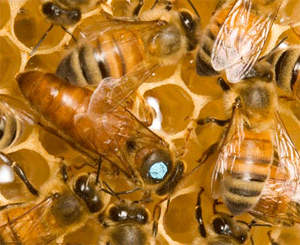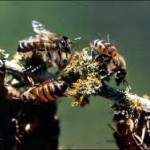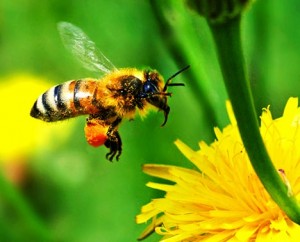 There are over 20,000 recognised species of bees in the world of which the majority are solitary or only partly social. That is the females live and rear their young by themselves without the aid of others of their species, or in the case of partly social they may live together in groups and share some aspects of the rearing of the next generation. Of all the bee species there are only three groups that are considered to be truly social. These are the Honey Bees, Bumble Bees and most Stingless Bees.
There are over 20,000 recognised species of bees in the world of which the majority are solitary or only partly social. That is the females live and rear their young by themselves without the aid of others of their species, or in the case of partly social they may live together in groups and share some aspects of the rearing of the next generation. Of all the bee species there are only three groups that are considered to be truly social. These are the Honey Bees, Bumble Bees and most Stingless Bees.
The term given to this true form of social behaviour is ‘Eusocial ‘ deriving from the Greek eu meaning ‘good or real’ plus ‘social’. True sociality (eusociality) is defined by three features:
1). There is cooperative brood-care, so that individuals care for others offspring, not just their own.
2). There is an overlapping of generations so that the group or colony can grow and offspring are able to help their parents during their life time rear further young.
3). There is a reproductive division of labour, in that not every individual reproduces equally in the group. In the case of bees there is usually only one reproductive queen and the female workers are sterile or have their reproductive ability suppressed.
Of the three groups it is the honey bee which forms the most complex eusocial colony and exhibits a highly sophisticated system of communication between group members. Honey bee colonies often have over 60,000 individuals although some stingless bees have been known to form colonies of up to 40,000. Bumble bee colonies are smaller usually only containing a few hundred bees and there is little communication between workers especially with regard to potential food sources.
All three groups are made up of castes, or sub groups designated specific tasks. Depending upon what you read you will generally see three castes mentioned, that is the Queen, Workers (non reproductive females) and Drones (reproductive males). However to be more accurate there are actually only two castes in a bee colony based on reproductive ability. The reproductive caste is made up of the Queen and the Drones and the non reproductive caste of the non laying female worker bees.
The fact that the female workers give up their reproductive capabilities has long puzzled scientists and even Darwin had problems fitting eusocial behaviour into his theory of evolution. Subsequent theorists have tried to explain such behaviour by suggesting that by helping to raise their sisters and ensuring that their mother the queen is free to devote her time to egg laying alone, the worker bees actually ensure that more of their genes are passed on, than if they reproduced themselves and reared their own young.
Whatever the reason for the development of eusocial behaviour in some groups of bees you only need to study a honey bee colony for a short time to see what a complex efficient system it is.



